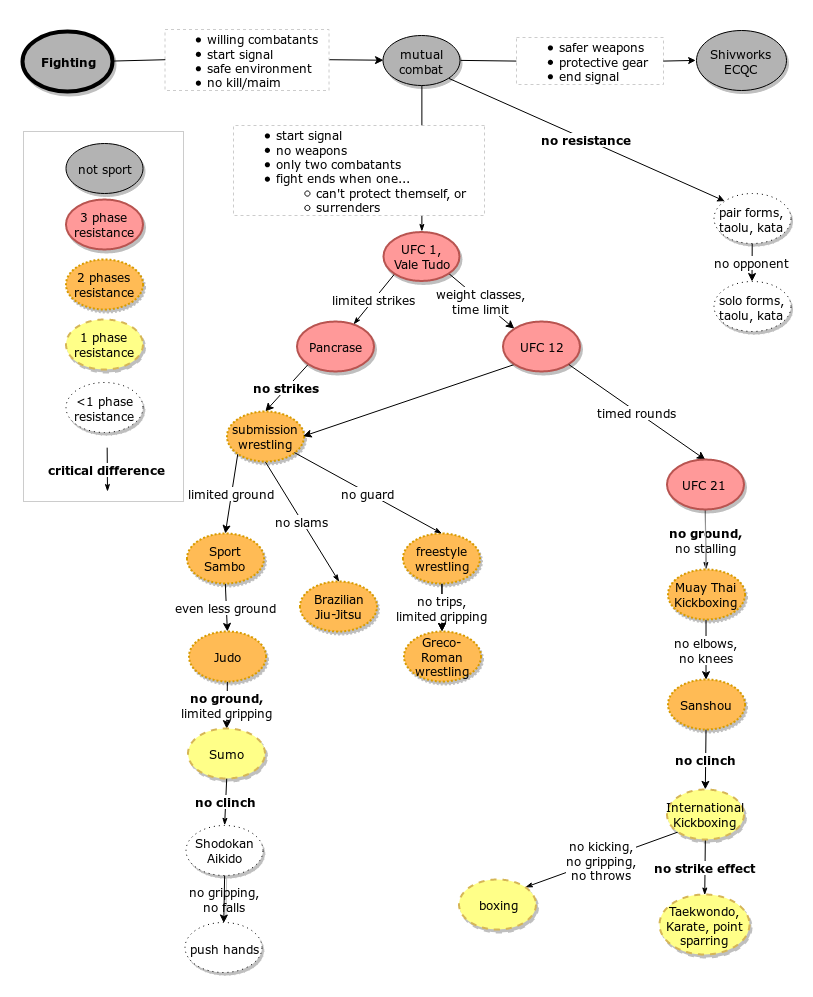One way to look at the relationship between a "real fight" or "street fight" and a fighting sport is to consider the rules, restrictions, and limitations imposed on the competitors. Any student who wants to maximize their training's applicability to fighting must consider how "near" a fighting sport is to a real fight. But if a better chance of survival is the goal, suffering debilitating short- or long-term injury (e.g., traumatic brain injury) in the process of training is counterproductive. Although safe, sustainable training and realistic, fight-like training are competing goals, there is good evidence that some training methods lie in a "Goldilocks" zone where they provide a fair measure of both. In the following graph, nodes (ovals) represent fighting sports and edges (arrows connecting them) represent rules or constraints added to those present in the preceding oval.

"Phases" refer to stages of combat that present different problems and suggest different solutions to the fighter. (Notice that these are not "distances" or "ranges".)
- free movement - punch, kick, stab, shoot with free movement
- clinch - entangled grappling, striking, etc. with combatants standing
- ground - grappling, striking, etc. with one or more combatants off their feet
One of the interesting things to consider regarding forms/taolu/kata is that it may well include all of these phases! Lacking a resisting opponent, however, its combative application is absent. In the graph, it's almost a "third dimension".
Comments powered by Talkyard.